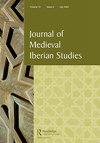卡斯蒂利亚君主制与王朝记忆:格拉纳达皇家礼拜堂的资金筹措(1504-1526)
IF 0.4
2区 历史学
0 MEDIEVAL & RENAISSANCE STUDIES
引用次数: 0
摘要
人们从政治、制度和艺术角度对格拉纳达皇家教堂进行了分析,但从未从经济角度对其进行过研究。本文考察了它从1504年成立到1526年皇家礼拜堂成立的筹资过程。一项对西曼卡斯总档案馆未发表资料的研究表明,天主教君主,尤其是费尔南多,优先考虑其建设,不利于在格拉纳达王国发展健全的教会组织。这些文件强调了皇家教堂对皇家国库的依赖,通过特别支付令(libranzas)的方式,而不是依靠自己的财产和权利产生的收入。最后,论文转向卡洛斯五世,展示了在他统治的最初几年里,皇家教堂是如何成为优先事项的。本文章由计算机程序翻译,如有差异,请以英文原文为准。
Castilian monarchy and dynastic memory: the financing of the Royal Chapel of Granada (1504–1526)
ABSTRACT The Royal Chapel of Granada has been analysed from political, institutional, and artistic perspectives, yet it has never been studied from an economic point of view. This paper explores its financing from the moment of foundation in 1504 until the establishment of the Royal Chapel Congregation of 1526. A study of unpublished sources held at the General Archive of Simancas shows that the Catholic Monarchs, particularly Fernando, prioritised its construction to the detriment of developing a sound ecclesiastical organisation in the Kingdom of Granada. These documents highlight the Royal Chapel’s dependence on the royal treasury, by way of juros de heredad or extraordinary payment orders (libranzas), instead of relying on the revenues generated by its own properties and rights. Finally, the paper turns to Carlos V to show how the Royal Chapel became a priority during the first years of his reign.
求助全文
通过发布文献求助,成功后即可免费获取论文全文。
去求助
来源期刊

Journal of Medieval Iberian Studies
MEDIEVAL & RENAISSANCE STUDIES-
CiteScore
1.20
自引率
20.00%
发文量
24
 求助内容:
求助内容: 应助结果提醒方式:
应助结果提醒方式:


